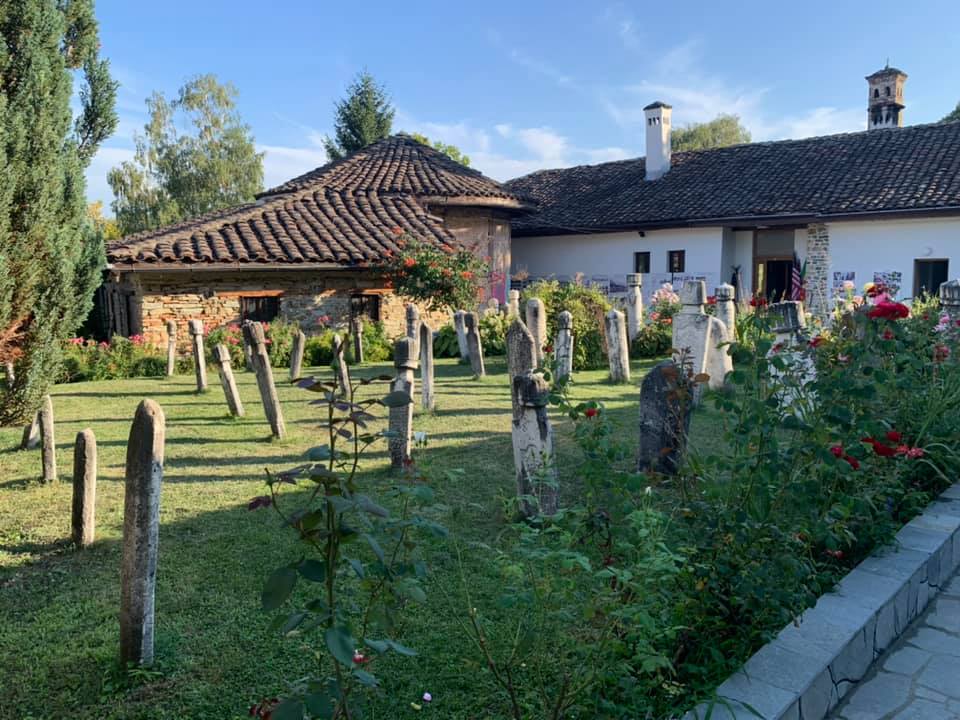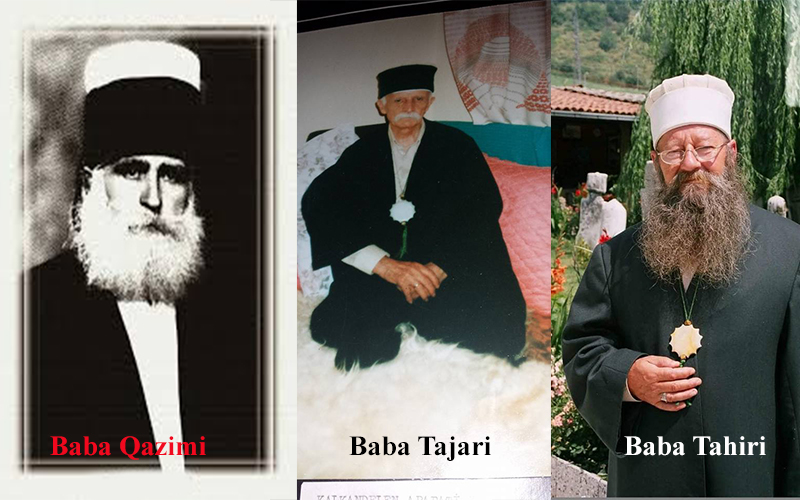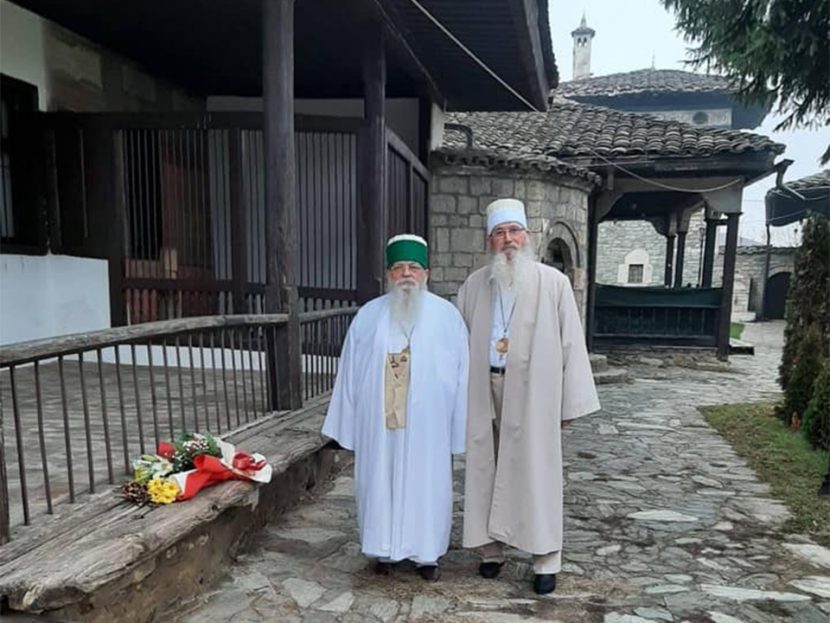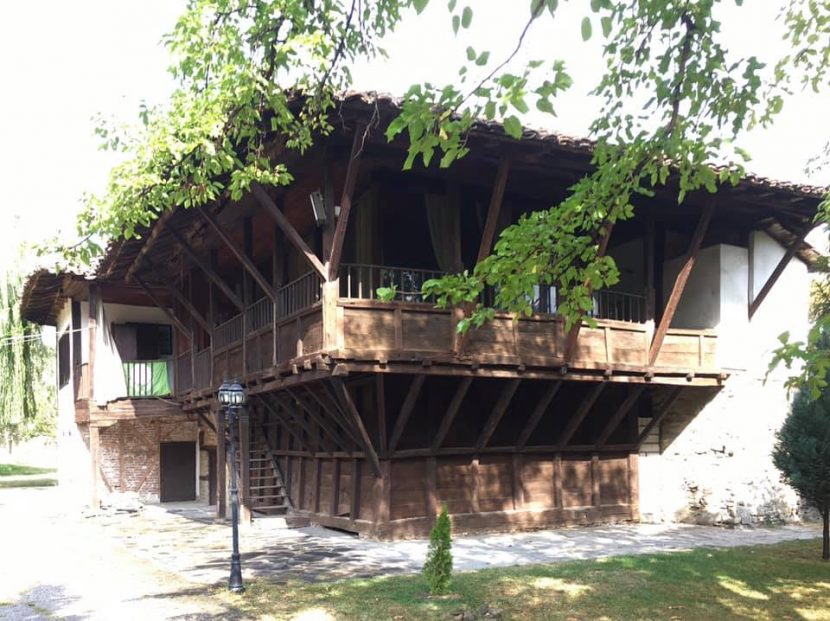
Today, for millions of Bektashis in the world, it is an important event, commemorating 483 year of the establishment of the Bektashi tekke of Tetova, “Harabati Baba”, by the cleric Seresem Ali Dede . The spread of Islamic culture in Tetovo and its surroundings in the XV-XVI centuries had its development in many fields of culture, economy, political, military, religious and left its mark on the historical development in the later years of the Tetovo pasha. When Sultan Suleiman the Magnificent ruled in the 16th century, the Kanun made great progress in many spheres of life and was the culmination of the establishment of this empire.
According to historical sources, Sersem Ali Dede was born in the last quarter of the 15th century, around 1475, during the reign of Ballëm Sultan, the Second Piri of Bektashism. He was born in this period of prosperity of the Ottoman Empire. Of course, the family composition and his parents, gave him the opportunity to have family ties to the imperial court, as he was the brother-in-law of Sultan Kanun, he was married to his sister, Mahidevran. Under these conditions, he received high culture, was endowed with high moral virtues, intellectual and extensive knowledge. He was educated in Enderun and was a childhood friend of Sultan Suleiman. He held high positions of the Ottoman Empire up to vizier, at the time of his rule. But after the events with his sister, who was the Sultan’s wife, Sersem devoted himself to Bektashism. In 1520, he went to Haxhi Bektash, where he surrendered wholeheartedly and with dedication, achieving the degree of perfection, in school and preparation for Bektashi clergy, in the tradition established by Ballëm Sultan. He was promoted to dervish and his father and, after a few years, went to the Jenixhe tekke in Vardar, where he remained until 1534. After the death of his father Hajreti, he went to the Dimoteka tekke, which was an important center of Bektashism. There he studied the literature of the dervishes and wrote many Bektashi poems. He was a prominent theologian, a well-known mystic of the time, philosopher, poet. The literary, philosophical, religious, artistic and other creativity of Sersem Ali Dede left its mark on Rumeli. Here he took on the mission of spreading Bektashism in the Balkans, where Sersem chose the territory of Polog. Starting from this mission and goal for Bektashism, in 1538, he started the establishment of the tekke of “Harabati Baba”, on the outskirts of Tetovo. where it continued until 1548. For the construction of this tekke, Sersemi, spent a lot of money .For the construction of this large complex and all the wealth, he left behind, a memorial, , which would testify to the life and work of his. It would be named after the tekke “Harabati ..” or the Shrine, the temple of Bektashism In addition to setting up the tekke, Sersem brought from the other tekkes of Istanbul, Dimoteka 15 dervishes the perfection of the necessary religious services and sermons, preparing them as fathers to serve in other tekkes. Among the well-known clerics from this center, who preach in other tekkes are mentioned: Kazëll Baba, Balli Baba, Kojun Baba, Javer Baba, Sadredin Baba and many others. In 1551, he went to the Hajj Bektash where he was elected World Leader of the Bektashis. There he further developed his knowledge in the field of theology and philosophy, literature, Islamic culture, continuing the path of Ballem Sultan, in the tradition, elaboration and interpretation of the norms and rules of Bektashi doctrine. He passed away in 1569. Thus, in the 16th century, he became one of the famous mystics of the time. In his writings, studies, analyzes and descriptions, he starts from man and his motto was that man must first know himself, that by knowing himself, he can know nature, the world, the divine influence, to know the power of God. Sersemi begins his poetic verses with evocations addressed to his guides, Haxhi Bektash Veliu and Ballëm Sultan. Here is how he writes:
“Seven ‘pal’ the worlds with all the corners, all the way I walked, /
Calling: O my Pir’i! O Hynqar Haxhi Bektash! /
I finally bowed to his prak and reached, /
Calling: O my Pir’i! O Hynqar Haxhi Bektash! /
“And Ballëmi, his corner has been taken away is standing, /
All the Angels serve, fulfill what is required of them, /
In the seven worlds from all angles, their voice is roaring, /
Calling: O my Pir’i! O Hynqar Haxhi Bektash! ”
He remains a prominent cleric, mystic, theologian, philosopher, poet. Sersem Ali Dede gave Bektashism to the Balkans, a new development in the 16th century, because the tekke center of “Harabati Baba´” in Tetovo, turned to the spread of the strengthening of Bektashism and influenced Albania as well. Many dervishes and fathers were trained here, who were distributed in the tekkes of the Balkans. We remember today the founder of the tekke Harabati Baba, on this important anniversary, as a major figure of a high personality, who gave the name Bektashism, he will remain unforgettable in the history of the Bektashis.
Other details about the tekke “Harabati Baba” -Tetovo
The building of the tekke “Harabati Baba” and its clerics over the years.
The “Harabati Baba” tekke was founded in Tetovo, Macedonia by Sersem Ali Dede in 1538. He brought 15 dervishes and finished this magnificent temple in 1548. XVI, during the reign of Sultan Suleiman, he was also a senior official of the Ottoman Empire, vizier. He was a prominent theologian, a well-known mystic of the time, philosopher, poet. Sersem Ali Dede’s literary, philosophical, religious, and other artistic worksm left their mark on Rumeli. In 1551, he was elected World Leader of Bektashism, Sersem Ali Dede, a position he held until his death (1569). During this period we have no written data for the Tetovo tekke. But it recovered in the time of the pasha of Tetova, in the time of Rexhep Pasha and Abdurraman Pasha, a period in which the Bektashi clerics came: Baba Mehmet Harabati (until 1780), DedeHyseni (until 1784), Baba Sadiku (until 1789), Dede Hasani (until 1793) Ahmet Ekmeçiu (until 1799) who enriched the tekke with powerful properties, father Hyseni II (until 1818), Dede Aliu (until 1833), Haxhi Baba Emini (until 1880). In the 16th century, the Tetovo tekke became an important cultural center in the Paschal period. Here the intellectual life of the city of Tetova with its surroundings, the national element from the commercial, craft, clerical, etc. layers, which played an important role in the historical events, received a strong impetus. Mention is made of the Dervish Cara uprising of 1843-44, led by the Bektashi clerics dervish Kapo, dervish Pola. The headquarters of the uprising was in the tekke of Tetovo. Further, over the years, the fathers continued: father Muhammad Mahdi (until 1882); Haxhi Dede Ahmeti, who in his time served forty dervishes and 15 fathers (until 1901); father Hamza (until 1908); father Hamiti (until 1912); dervish Nebiu (until 1914). The properties were later occupied by Serbs. In 1941, father Qazim Bakalli took over the leadership of the tekke (until 1944); father Tajar Gashi (until 1980). The premises of the tekke were used by the textile company Teteks, until July 1994; father Tajar Gashi (1994-2000); father Tahir Emini (2000-2007); Haxhi Baba Edmond Brahimaj (2007-2011) ’dervish Abdyl-Metalip (2011 onwards).
Nearly five centuries in this tekke, have served, acted and created, Bektashi clerics and intellectuals, theologians, philosophers, writers and others. Its architecture and others constitute the treasure of Bektashi and Albanian national culture. It was also the school of preparation of the clergy for centuries. It also has a historical role, as it contributed a lot to development in many spheres of life, culture and education.
Harbati tekke building, architecture
The architecture of the tekke consists of: the complex architectural building of the tekke, imposing and magnificent, constitutes a pearl of the treasure of Albanian and world culture. It consists of many objects of its complex: Shrine-Kubbeli.
Mejdan, where today is kept only in front of the room with the two inscriptions; the house or summer lodge where the clergy stayed; selamllëk (waiting room); north corner and tekke fountain; winter house with other facilities; the small shrine, the mausoleum, the laundry, the small kitchen, the tomb of father Mehmet Harbat; workers’ house; tekke restaurant; tekke oven; tekke barns; the basement of the tekke; cattle sheds; large tap; small tap; tekke cemetery; watchtower above the main entrance. The tekke has four gates which symbolize elements from Bektashi doctrine. The magnificent complex of this tekke, with the buildings , are integrated into a unique whole and complement each other with their own features such as gates, chimneys, roofs, four-storey columns, rich color of facades, murals, numerous inscriptions… In the courtyard of the tekke, there is endless greenery, harmony in the composition of details and many other qualities that are of extraordinary value, which from time to time, represent symbols that have to do with elements of doctrine and the completion of Bektashi rites.
Its architecture and others constitute the treasure of Bektashi and Albanian national culture.
Prepared by: Nuri Çuni
Kujtim Boriçi



